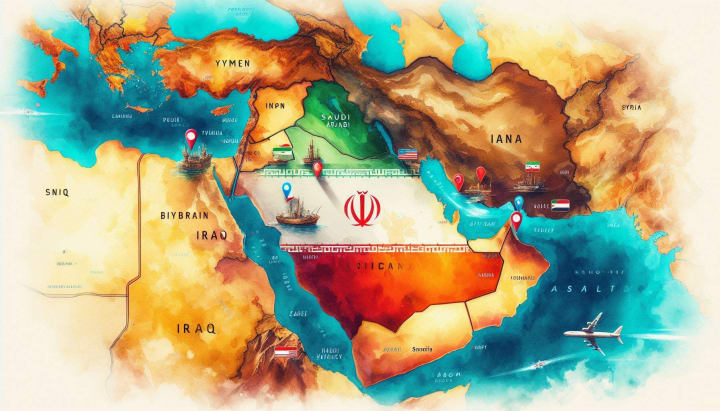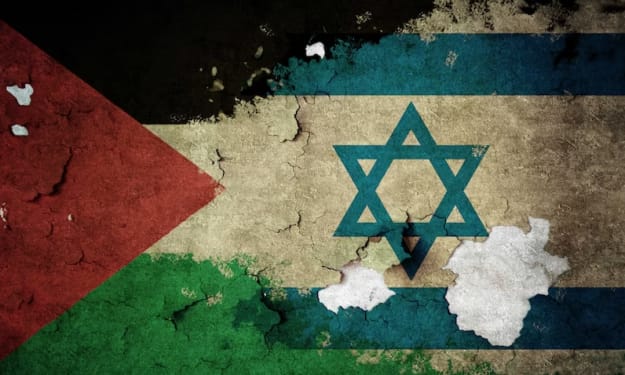
The Middle East stands as one of the most intricate and tumultuous regions in the world today. With four failing states and three ongoing wars, the involvement of major powers taking opposing sides exacerbates the situation. The presence of numerous armed militias and terrorist groups further intensifies the cross-border violence. Historically, the region has been mired in conflict, stretching back to the early 20th century. Amidst this turmoil, two nations, Saudi Arabia and Iran, consistently emerge as key players. Their deep-seated rivalry is crucial to understanding the persistent conflicts plaguing the Middle East.
Saudi Arabia and Iran have never engaged in direct warfare. Instead, they engage in proxy warfare, supporting opposing factions in other countries and instigating conflicts indirectly. This strategy has had catastrophic consequences for the region. Countries, especially those already struggling economically, suffer immensely when more powerful nations manipulate events within their borders. For both Saudi Arabia and Iran, these civil wars represent significant threats and opportunities. Their rivalry is essentially a battle for influence, transforming the entire region into a battleground. Hence, this rivalry is often described as a Cold War.
Drawing parallels with the famous Cold War between the United States and the Soviet Union, which lasted for 40 years without direct military confrontation, Saudi Arabia and Iran similarly avoid direct conflict. Instead, they support dictators, rebel groups, and intervene in civil wars to undermine each other. However, their struggle is not for global dominance but for control over the Middle East.

To comprehend the Saudi-Iranian rivalry, one must look back at the origins of these nations. In the early 1900s, the Arabian Peninsula was a mosaic of tribes under the Ottoman Empire's rule. After World War I, the empire's collapse led to a power struggle among these tribes. The al-Saud tribe eventually emerged victorious, establishing the Kingdom of Saudi Arabia in 1932. The discovery of vast oil reserves in 1938 transformed the Saudi monarchy into a wealthy and influential power, forging a strong alliance with the United States.
On the opposite side of the Persian Gulf, Iran was also endowed with substantial oil reserves and a large Muslim population. However, foreign interventions created persistent instability. Iran faced invasions by Russia and Britain in the 18th century, and in 1953, the US orchestrated a coup to overthrow the popular Prime Minister Mohammad Mosaddegh, installing the autocratic Shah Reza Pahlavi. The Shah's regime, though modernizing and Westernizing, was marked by corruption and brutal repression through his secret police, the Savak. By the 1970s, while both Saudi Arabia and Iran had oil-based economies and US-backed governments, their internal dynamics differed significantly. The Iranian populace, feeling oppressed by the Shah’s secular reforms, eventually rebelled.
In 1979, Iran’s Islamic Revolution led by Ayatollah Khomeini overthrew the Shah, establishing an Islamic republic. Khomeini’s vision of a government led by Islamic clergy clashed starkly with Saudi Arabia's monarchy, which also claimed leadership of the Muslim world due to its control over Islam’s holiest sites, Mecca and Medina. This revolution marked the onset of intense rivalry between Saudi Arabia and Iran. Khomeini’s rhetoric against Western-backed monarchies and his support for an Islamic government posed a direct ideological and religious challenge to Saudi Arabia, whose population and monarchy were predominantly Sunni, unlike Iran’s Shia majority.
The revolution prompted Iran to export its revolutionary ideology, supporting Shia groups in Iraq, Afghanistan, and Saudi Arabia aiming to overthrow their governments. This move alarmed Saudi Arabia, leading to an increased military and strategic alliance with the US and the formation of the Gulf Cooperation Council (GCC) to counter Iranian influence. The Iran-Iraq War (1980-1988) further deepened the feud, with Saudi Arabia backing Iraq to contain Iran’s growing power. This war, characterized by trench warfare, chemical weapons, and immense casualties, left lasting animosity, especially as Iranians blamed Saudi support for prolonging the conflict.
The US invasion of Iraq in 2003 created another proxy battleground. The subsequent power vacuum led to the rise of sectarian militias, with Saudi Arabia and Iran backing opposing Sunni and Shia groups. The Arab Spring in 2011 further destabilized the region. While pro-democracy movements threatened the status quo favored by Saudi Arabia, Iran saw an opportunity to challenge existing regimes. Both nations intervened in multiple countries, exacerbating conflicts and contributing to the collapse of states like Libya, Syria, and Yemen.
Currently, direct military involvement by Saudi Arabia and Iran in countries like Yemen and Syria underscores the escalation of their proxy war. Saudi troops support the Yemeni government against Iranian-backed Houthi rebels, while in Syria, Iranian forces and allied militias support President Bashar al-Assad against Saudi-backed Sunni rebels. This ongoing rivalry not only perpetuates regional instability but also draws in other nations, creating a complex and unpredictable geopolitical landscape.
As the Middle East continues to destabilize, the extent to which Saudi Arabia and Iran will go to assert their influence remains uncertain. Their cold war, marked by indirect but impactful confrontations, shows no signs of abating, making the region’s future increasingly precarious.






Comments
There are no comments for this story
Be the first to respond and start the conversation.